I started this trip by flying north with my friend Christian of Yellow Wings in one of his Cessnas. The purpose was to undertake aerial photography of the Turkana region and visit some of the Desanech tribes near the Ethiopian border.
The trip started on an eventful note. I arrived at Wilson (the domestic airport), went through security and seeing a Yellow Wings plane with a pilot in it parked a short distance from the main building, proceeded to walk towards it (as I had done on previous occasions). I had only gone 10m when I felt a hand on my shoulder, turned round, to find an angry looking local policeman brandishing a large truncheon.
“Where are you going?”
“ To get my charter over there”
“ You are crossing a restricted area. You have committed an offence. Come with me”
Reluctantly, I followed him back to the outside of the terminal building.
“Sit down. I am going to have to take you to the police station. Your flight will be cancelled”.
At this stage, I began to get worried. I knew that I had done nothing wrong but I knew that he held all the power and that the best approach was the humble, apologetic one. I also knew that it would not be long before he openly solicited a bribe from me.
Sure enough:
“What can you do for me? You are in serious trouble – things can get very bad for you. Give me your passport”. His tone continued to be hostile.
“We will wait for my pilot”. This was not the answer he wanted to hear but it was the right one.
The pilot of the Yellow Wing plane then came over to us. It was not Christian but I recognized him as one of Christian’s employees. I explained what had happened. We both knew what this was all about. The pilot talked with the policeman in Swahili. The conversation got steadily more agitated and I could tell that a standoff was in place.
A ground staff member then came over and joined in; kindly arguing my case. I could start to see that my policeman friend knew that his chances of extracting a bribe were looking slimmer and when Christian appeared in his plane, the policeman turned to me and said.
“ You are very lucky. I am going to let you go”.
Such are the workings of Kenya’s law and order. Corruption remains an endemic feature of the country.
After this bit of entertainment, I hopped in the plane, proceeding north for around 75 minutes. We then landed at a small dusty airstrip; removed the doors on the right hand side of the plane and headed for one of the world’s great scenic wonders – Lake Logipi. This was my third aerial trip to the lake but each time conditions have been different because of changing rainfall patterns.
Logipi lies just south of Lake Turkana. It is a seasonal soda lake and sits within the Great Rift Valley in an area dominated by ancient volcanic features. It also attracts large numbers of water birds, in particular, Lesser Flamingos.
Kenya is in the gripes of a prolonged drought which has been especially severe in the northern part of the country. As we approached Logipi, I could see that the vast majority of the lake was dry, with the lake bed blindingly white in colour in many parts. Even from a few hundred meters above ground, the heat being reflected off the lake bed was extreme. However, pockets of shallow water were still evident. This first two photos show a volcanic island on one side of the lake. It is normally surrounded by water but currently there is only a small covering on one side of the island. Even from a far distance though, I could see the familiar pink shapes of flamingos grouped tightly together.
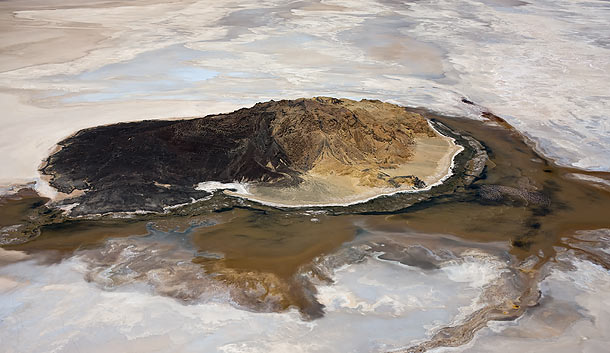
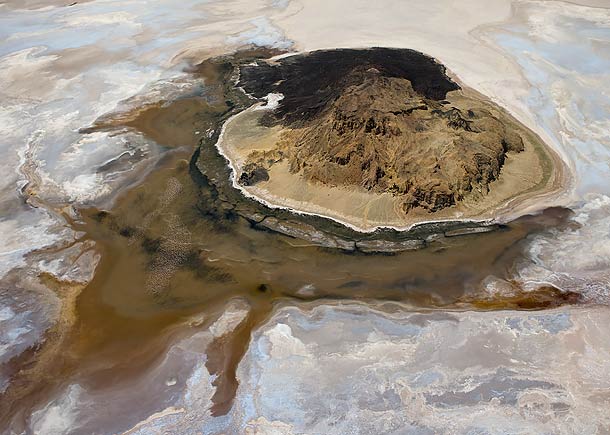
A layer of brown silt sits beneath the shallow water. Black mud lies below the silt. When the flamingos walk or run, the silt is swept aside leaving black mud trails.
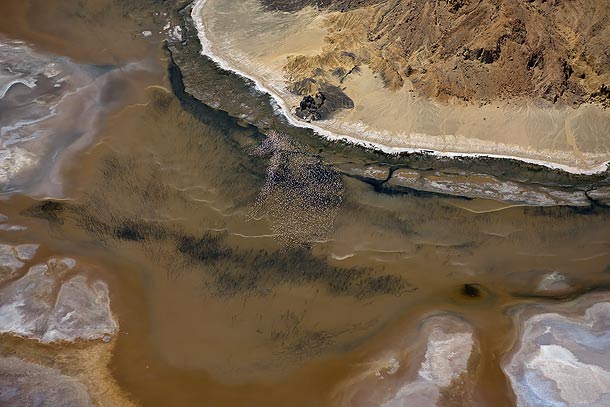
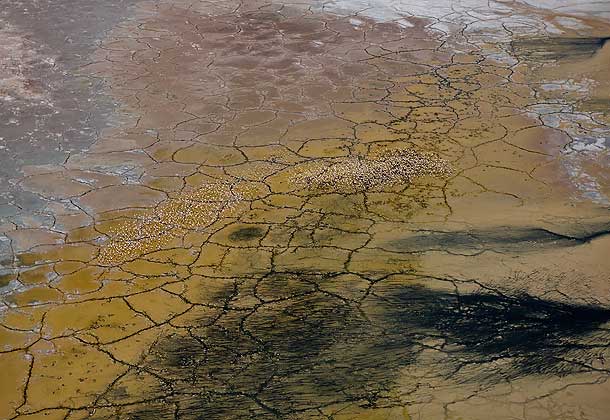
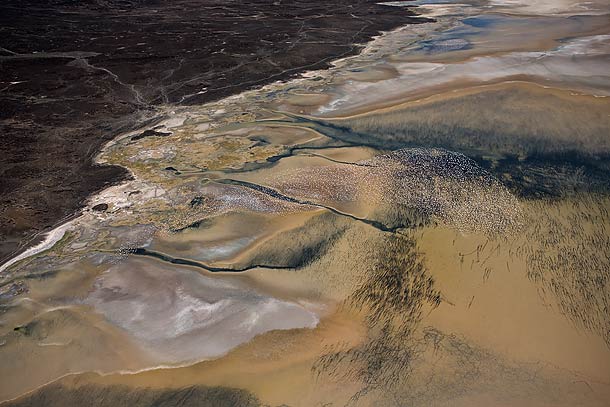
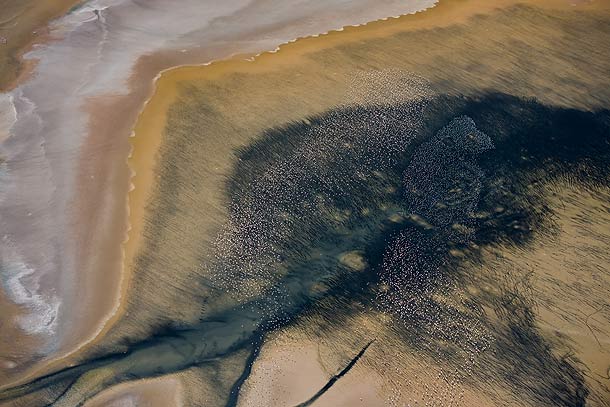
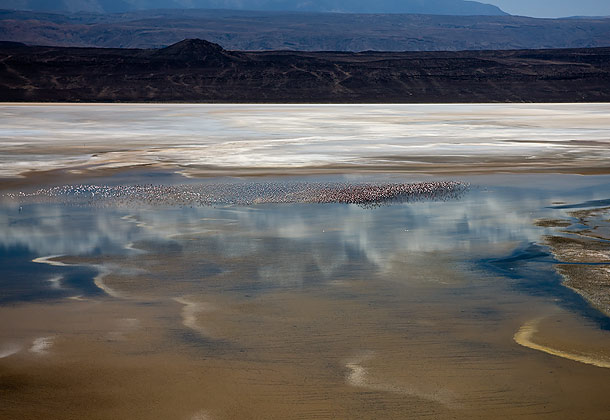
After Logipi, we headed north to the southern end of Lake Turkana. We made a quick circle of the volcanic South Island….

…before heading along the south shore of the lake, passing the perfectly formed caldera of Nabuyatom volcanoe. Lake Turkana is not called the Jade Sea for nothing.
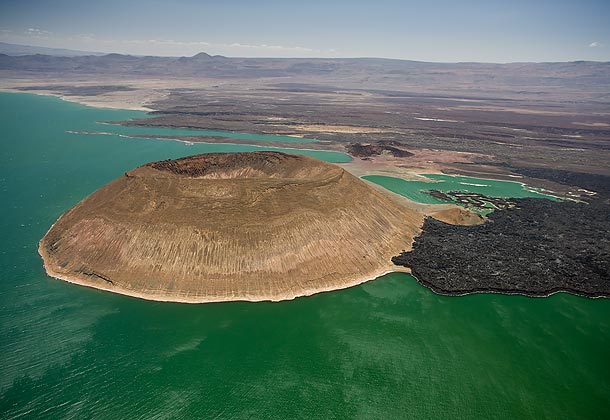
A little further on we landed at the town of Loiyangalani. We would base ourselves at nearby Oasis Lodge for the next two nights. Once a popular getaway for Kenya’s expatriate population, today it is dilapidated and badly in need of an upgrade. It is run by a near permanently drunk although amicable German. I had stayed here before and despite its faded state, loved the place. Yes, the accommodation is basic and at night hurricane force winds blow through the date palms making ear plugs obligatory if you want to get any sleep. But it has the world’s greatest swimming pool – fed by a natural hot spring – and the food is fantastic. The lodge only receives a handful of guests each month. In my three visits there have never been any other guests.
In the late afternoon I made a 30 minute drive to a Turkana tribe village on the edge of the lake. I hired a boat and motored around a nearby island which is sometimes inhabited by the El-Molo tribe. I was surprised to find some Greater Flamingos in the shallows. I watched them for several minutes from the boat before they took flight. As they did so, I managed to get one decent shot of them framed against Mount Kulal on the South East shore of Turkana.
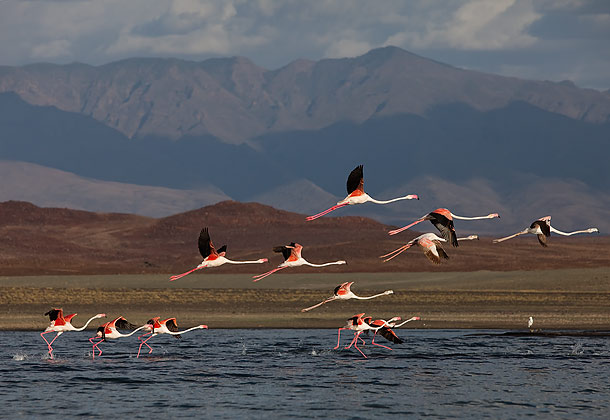
The El-Molo village which I planned to visit had moved to a more distant part of the nearby island. With fuel running low, we decided to head back to the Turkana village. As the sun began to set, I took a number of portrait pictures of the local people in beautiful light.
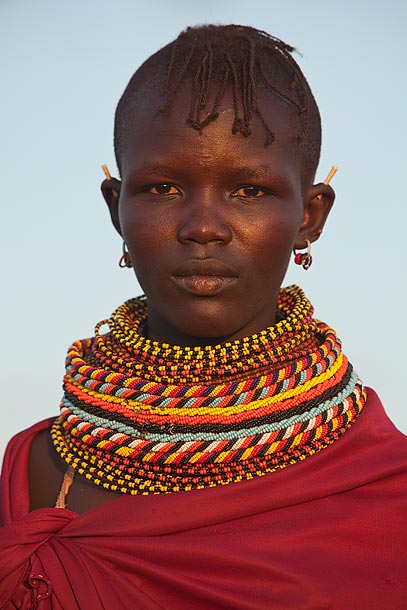
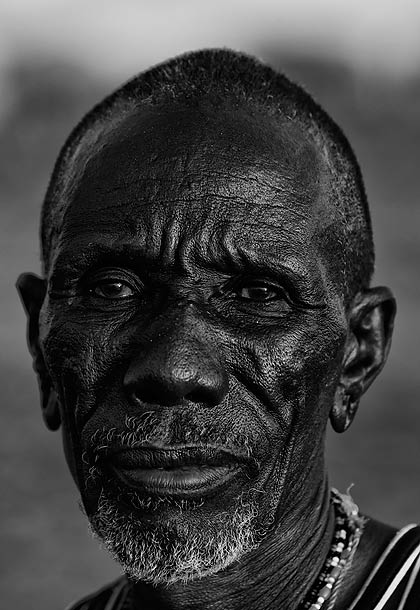
Early the next morning, I was back in the Cessna, flying further north. Half way up the east coast of the lake we cut across to the other side crossing over Central Island.
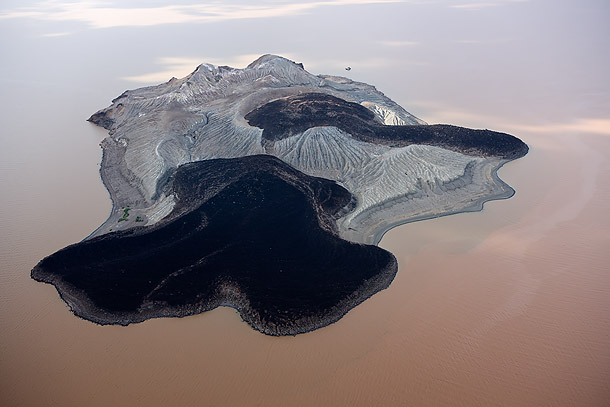
We then flew up the west coast before reaching the Omo river delta at the top of the lake. By this stage we had crossed into Ethiopian airspace. The contrast between the barren, desert scrub of most of the land that surrounds Turkana and the lush, green vegetation of the delta region could not have been more marked.
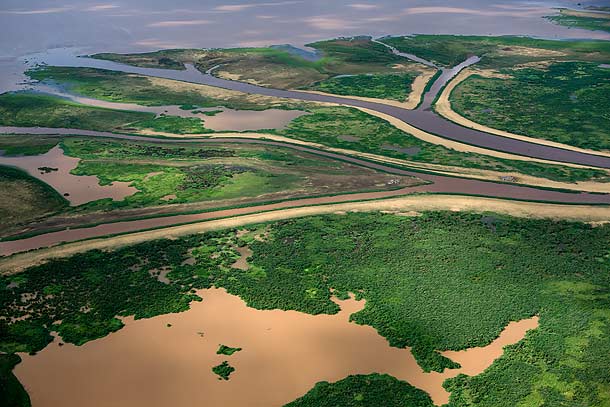
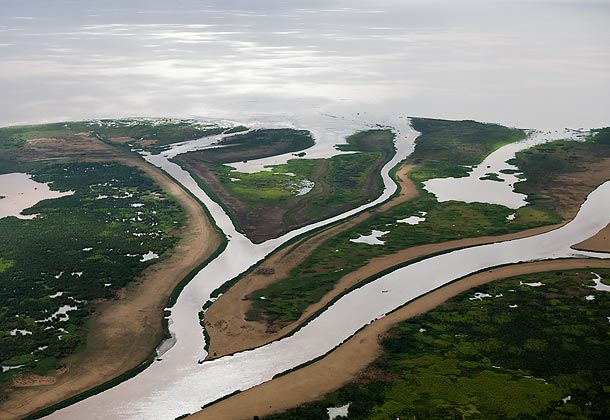
As we turned south again, flying a circuitous route, the landscape quickly morphed back to the parched yellows and browns of rock and sand. Our destination was Ileret, a small, desolate town of searing heat. As we approached the town, I could see some of the Desanech villages that I planned to visit.

We still had to find a vehicle to take us to the villages. So we rocked up to the local Catholic mission, had some tea and shot the breeze with the resident padre (a German Count no less) and soon we had managed to commandeer an antiquated 1950’s Russian equivalent of the Jeep complete with driver and translator.
After around 30 minutes, we reached the first village. It was sparsely populated, with few males in sight. Two things immediately struck me: firstly, how on earth could any human being survive up here? The heat is unbelievable; there is no fresh water supply other than the highly alkaline lake water (which forms the only drinking source for these people) and the only food available is fish and the occasional bit of goat. The village huts were a mix of basic and extremely basic and appeared to offer very little respite from the elements. The second feature that was hard to miss was how good looking the Desanech are.
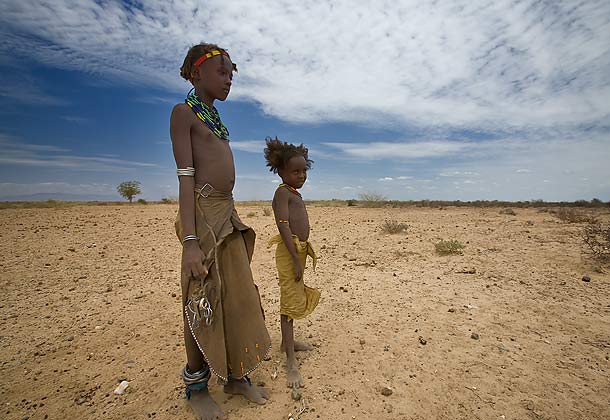
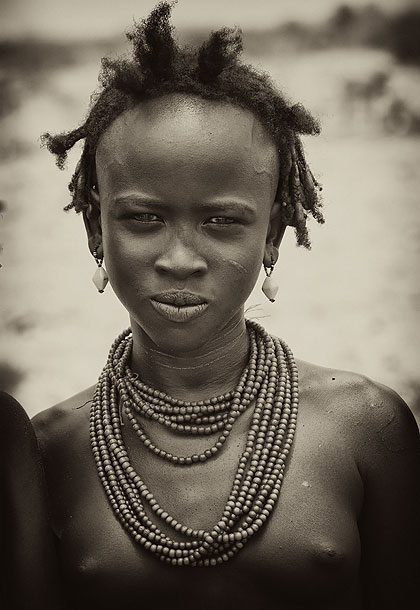
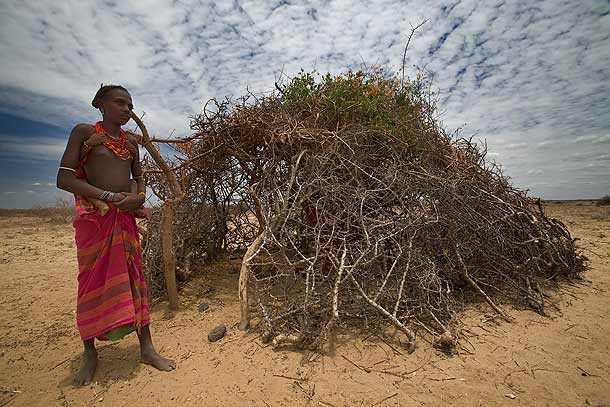
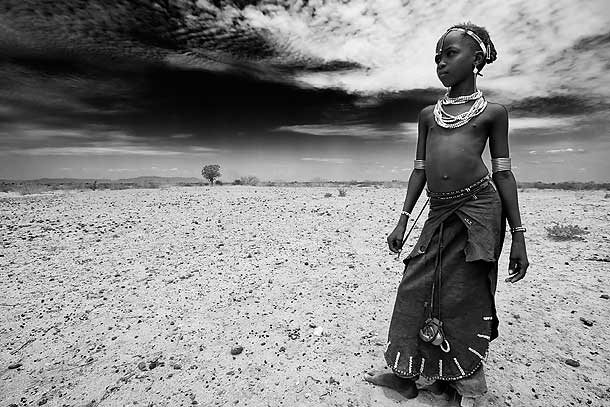
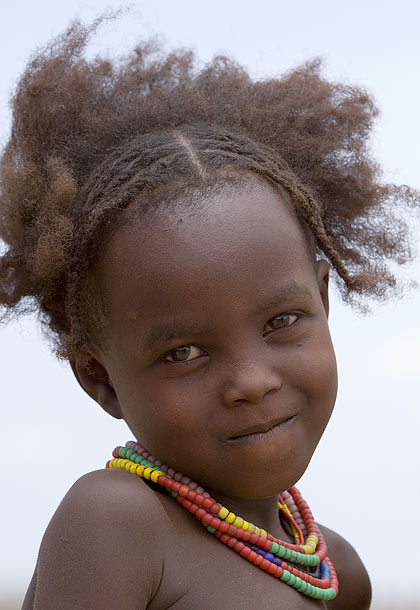
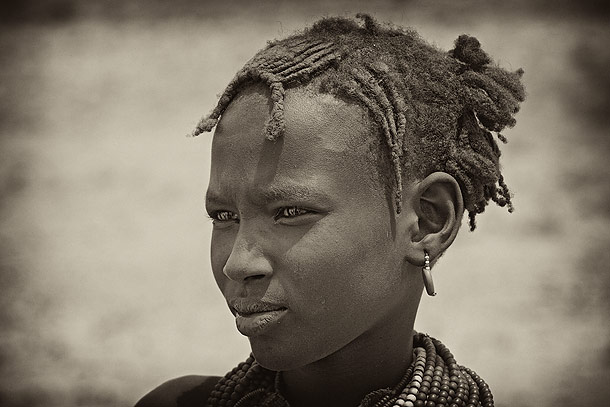
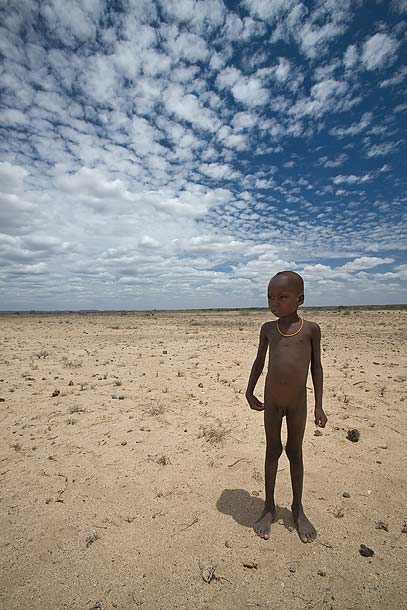
We visited two more villages, both also seemingly inhabited mainly by young girls and boys. Unlike my visits to other tribes in Kenya, it was refreshing not to be besieged by requests for money in exchange for having their photos taken. They appeared more than happy when I was able to give them some Polaroid pictures of themselves (if you can get your hands on a Polaroid camera and some film, it is a truly wonderful accessory to have in the company of the world’s more remotely located people).
In the late afternoon, we headed back down the eastern shore of the lake, back to our base at the south end. On the way we passed over more surreal landscapes.
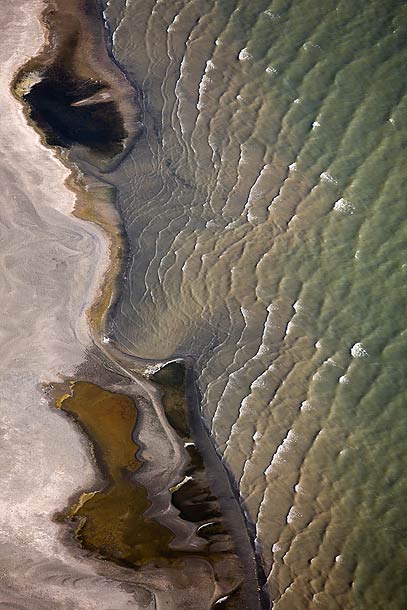
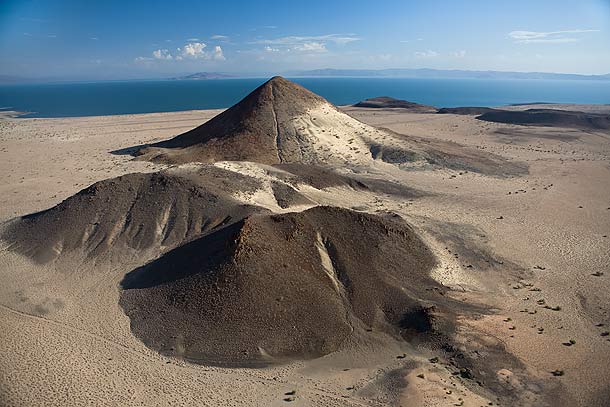
After another evening in Oasis Lodge’s amazing swimming pool, followed by the world’s greatest fish cakes and more tornado force winds, we packed up for good and were in the plane by 7am with the doors removed.
We again headed for the magical lake that is Logipi.
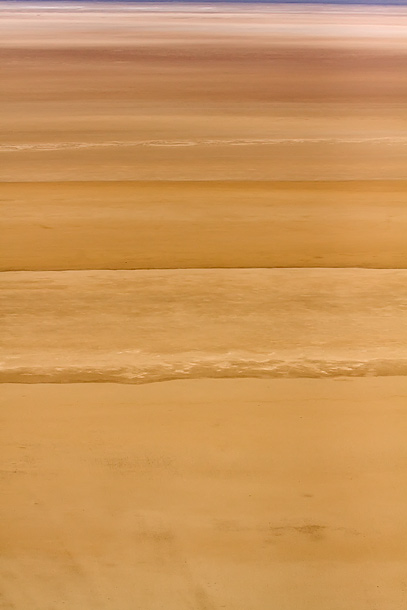
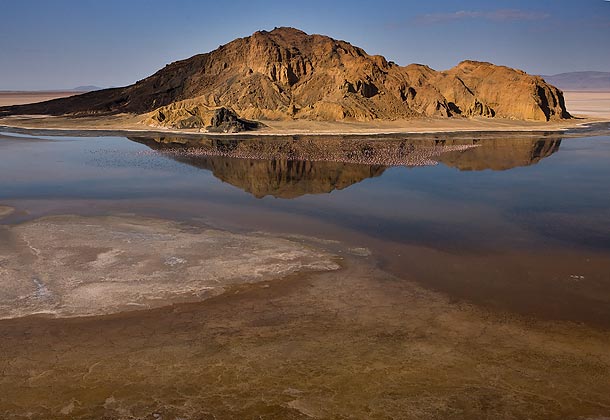
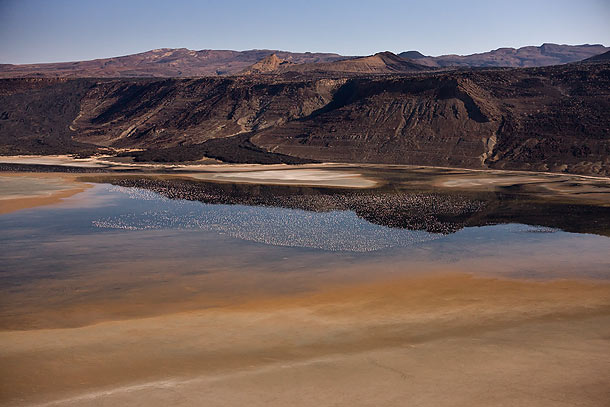
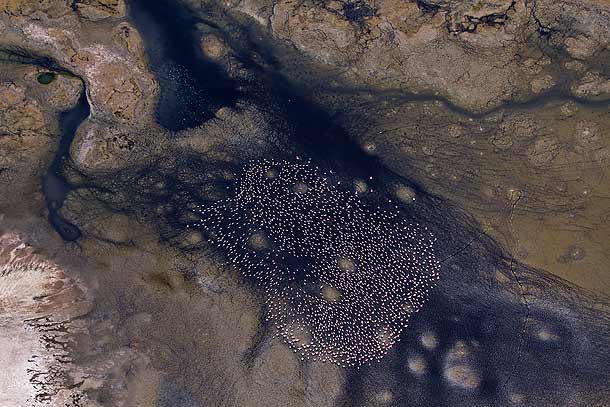
When large numbers of Lesser Flamingos fly together, they often form unusual shapes and patterns which I am always on the look out to photograph (Paveena has a cracker from a previous aerial trip to Logipi of flamingos in a near perfect heart shape – see the gallery section – Animals in the environment – birds).
What do you see? A mushroom?

…a devil’s tail?
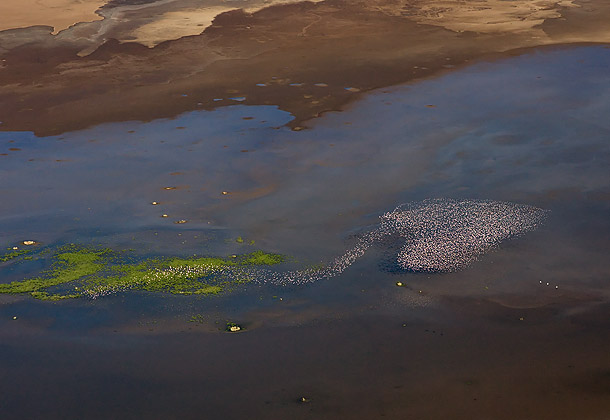
From Logipi, we proceeded down the Suguta valley, home to some amazing volcanic features.
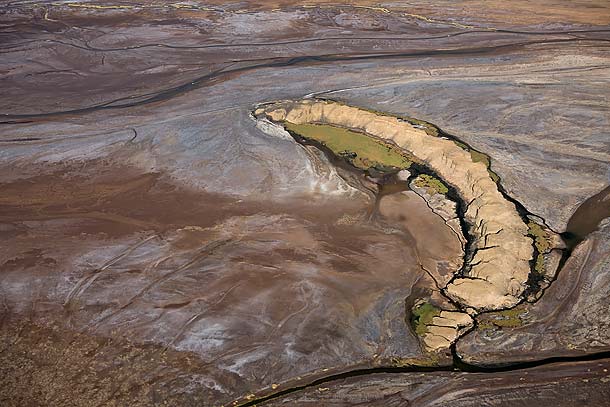
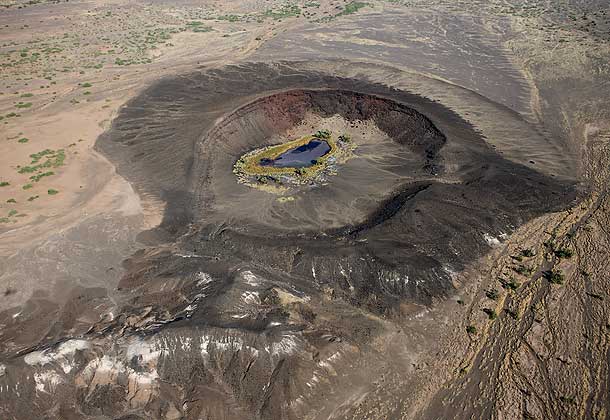
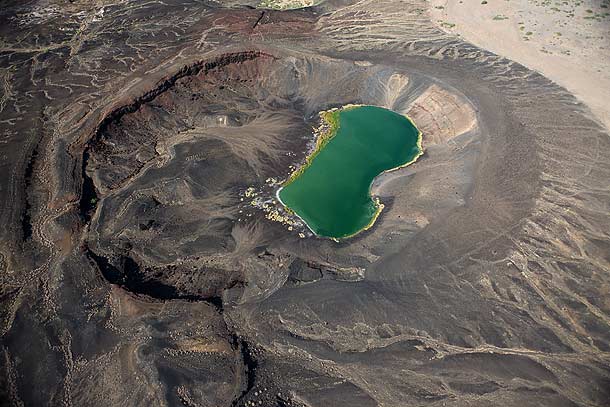
We then flew on past Lake Boringo before passing over Lake Bogoria. One can never be sure as to which of the Rift Valley’s soda lakes the majority of flamingos will congregate on; currently they seem to have a preference for Bogoria.
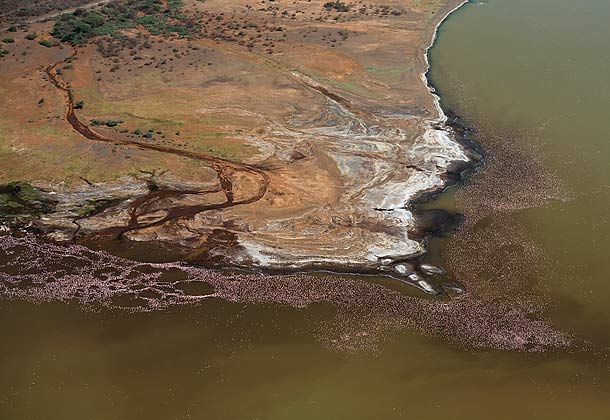
The next picture shows large groups of flamingos gathered near Bogoria’s hot water geysers.
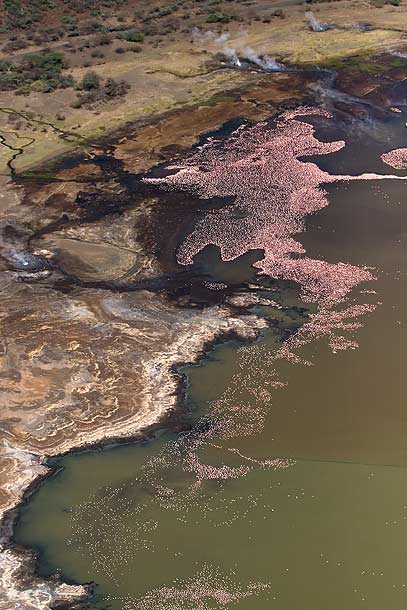
From Bogoria, we made the short hop to Lake Nakuru (very few flamingos here at present) where we landed to put the doors back on before carrying onto Nairobi.
After a night in Nairobi, it was up early the next morning for my charter to the Mara. As with my August trip, I again found the trip to be less productive photographically than in previous years. The migration has been sporadic this year with an absence of huge herds and river crossings. The lack of rainfall in Kenya has been the main factor.
Still, it would be hard to spend eight days in the Mara and not come away with a few acceptable images such is the density and variety of predators and game. I am often asked why I keep returning (“don’t you get bored? etc”). The answer is that every day is different – everyday you see new sights and animal behavior and even on a slow day, there really is nowhere else that provides the wildlife photographic opportunities that the Mara does.
On this Mara trip, I again spent most of the time near the river crossings as well as a few early mornings with a pride of lions that contained several young cubs. But as always, there were plenty of chance and planned encounters with other species.
Here is a Temmink’s Stint walking on the back of a Hippo…
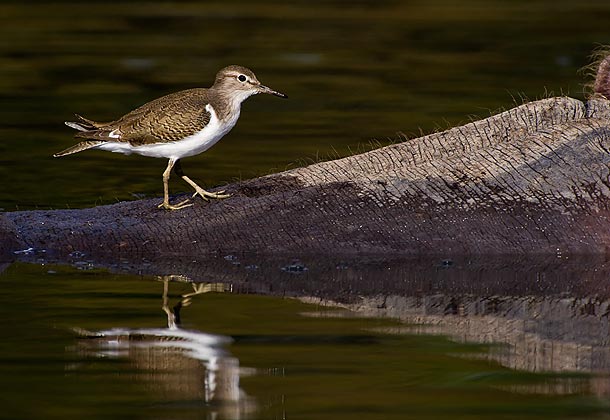
…a deliberate heavily underexposed shot of a Hammercop with a Catfish in its bill (my aim was to just have rim light showing)…
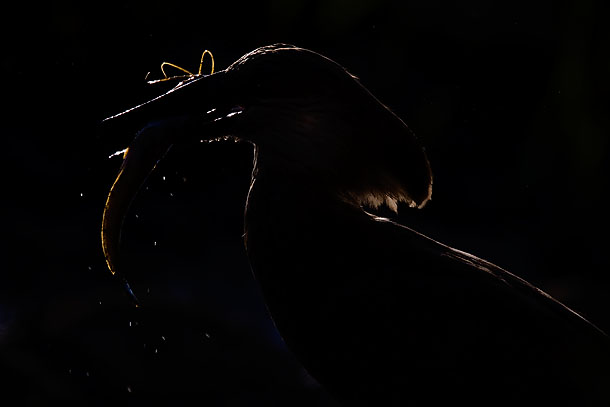
…Elephants under a beautiful sunset lit cloud with the moon above it…
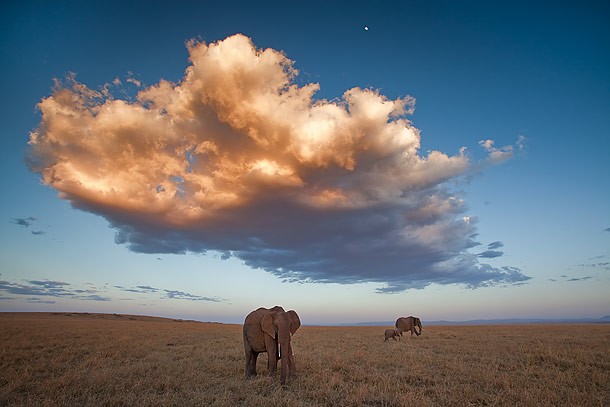
… a half asleep baby Zebra watch by its mum (the picture was achieved by hanging the camera with a wide-angle lens over the side of the vehicle to gain the low perspective…
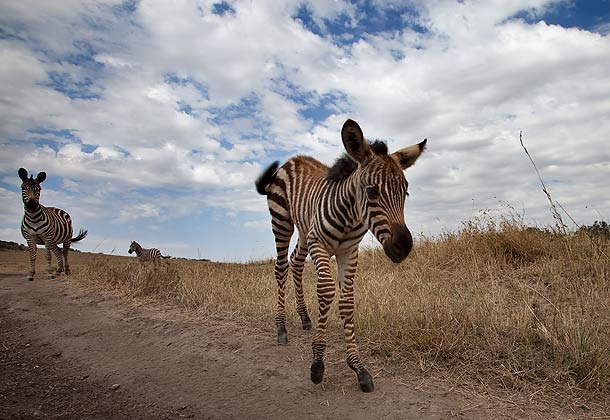
…elephants silhouetted against a red dawn sky…
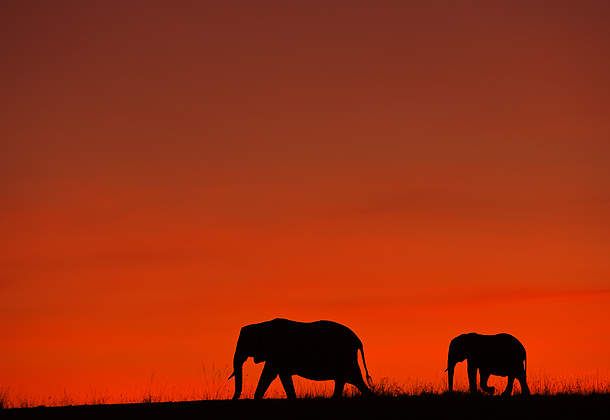
…and a black & white shot late one afternoon…
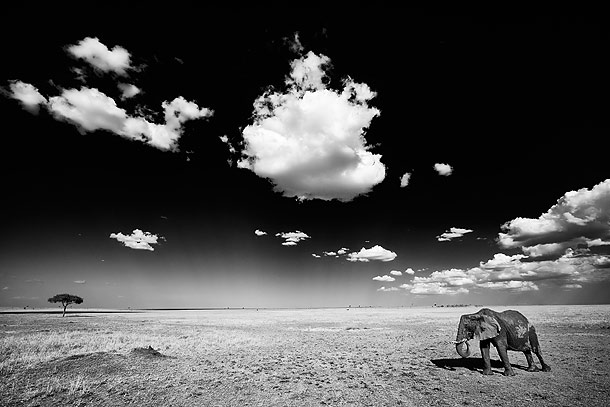
…and one of my favorites from the trip: a moody, late afternoon shot of a Zebra in the Mara river. Again deliberate underexposure, helped blacken the already dark background. A further half stop of light was removed in the post production process.
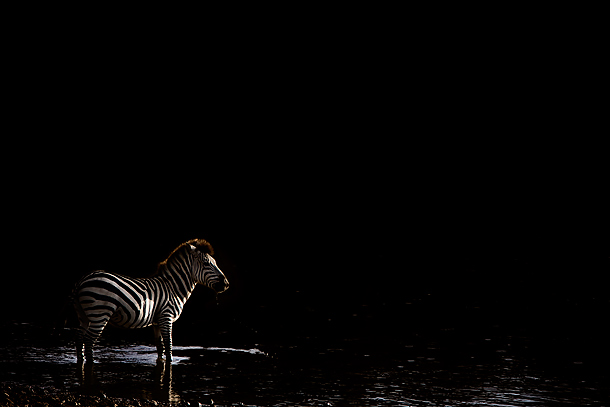
As I noted from the August trip report, the lack of rainfall has meant that water levels in the Mara river are much lower than normal. While this makes the actual river crossings much less spectacular (in most spots the animals can walk across in a few feet of water), it does result in some extraordinarily lengthy crocodile attacks given that a quick, simply drowning is no longer possible much of the time.
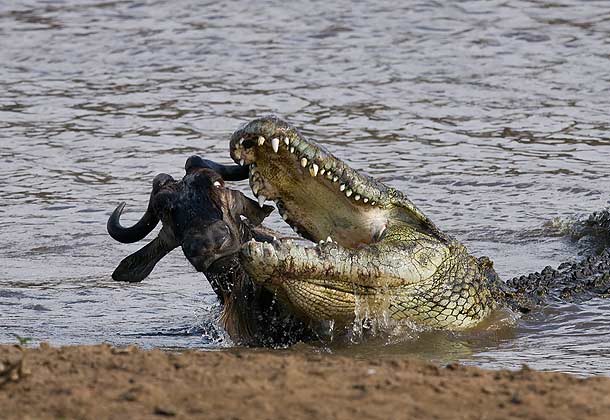
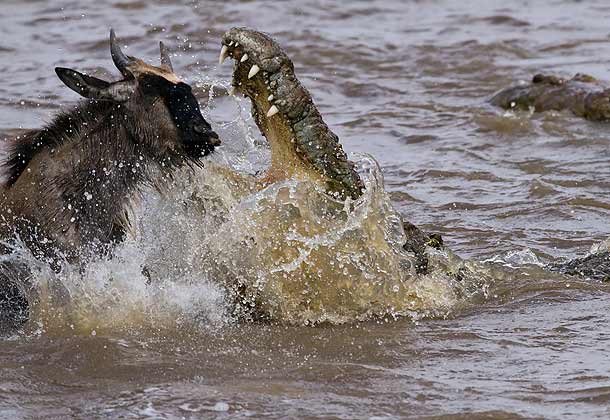
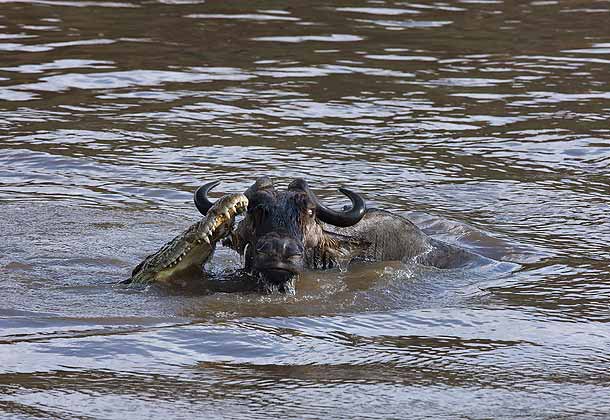
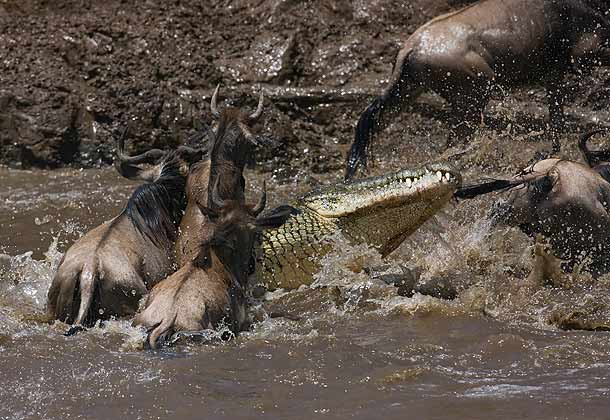
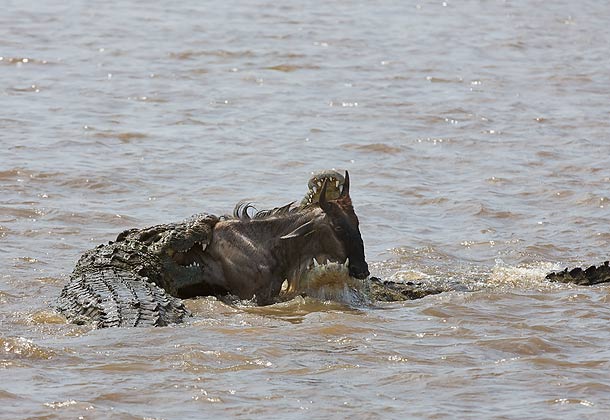
Lions, for the most part are pretty boring. They sleep up to 18 hours a day and generally hunt at night. However, when a pride has young cubs, photographic opportunities tend to abound when they are active and playful in the early mornings and late afternoons. While the weather was not very cooperative on this trip (ie little early morning/end of the day golden light) and long grass was a constant challenge, there were still a few great photographic moments.
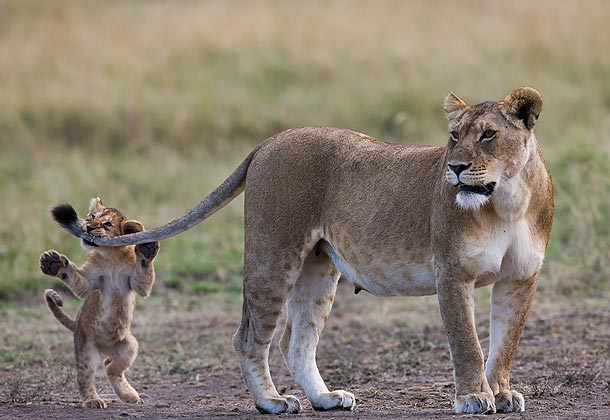
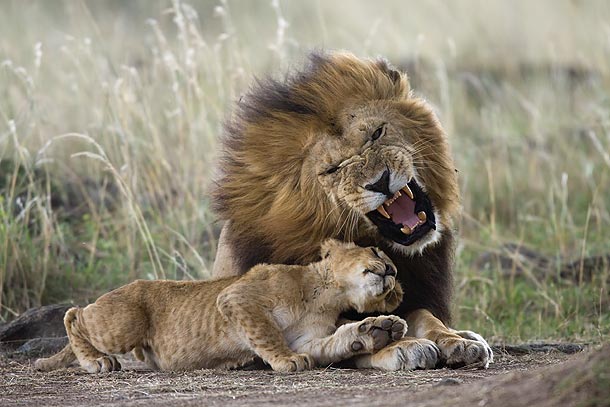
All in all, even when the Mara seems relatively slow, it still delivers. I certainly plan to return again next year.
Blair Nikula
March 22, 2010
Spectacular photos! The shorebird on the back of the hippo you’ve identified as a Temmink’s Stint is actually a juvenile Common Sandpiper.
Paul Mckenzie
March 22, 2010
Thx Blair. I am hopeless at identifying birds and the guide books are often more confusing than helpful!
Carol S.
September 16, 2010
Your pictures are beautiful and I wish one day that I will be able to do this, but in the meantime I enjoy the beauty and would really love to draw some of your pictures! I am an emerging wildlife artist and cannot get there myself yet to take my own pictures so I am hoping for permission from talented people such as yourself.
Paul Mckenzie
September 21, 2010
Hi Carol,
I have no problem at all with anyone wishing to create paintings from my images. All I ask is that you give me credit when selling or exhibiting your paintings. Something like “…based on a photographic image by Paul & Paveena Mckenzie (www.wildencounters.net).
Paint away!
mar
June 19, 2011
Beautiful, dramatic and evocative, that’s how I can describe the photos above. They tell a story! Thanks!
Lenny
November 13, 2011
Amazing pics, thanks! I’m Kenyan and it took staying in the West for many years to truly appreciate the beauty in our country. Thanks again
isa Barini
August 25, 2012
I am so sorry every time someone tells me about Oasis Lodge!…and that you did not have a chance to see it when it was considered and praised as one of the best Lodges in Kenya…I owed and run it for 6 years 1977 1983, ….it is /was Paradise…very difficult to keep up, and only the love for the place and the people gave me the enthusiasm needed…Than I had to go back to Europe and all fell apart…I refuse to go and see it again, but my heart and soul are there and will always be.
…and your fantastic pictures brought tears to my eyes…
Isa Barini
Paul Mckenzie
August 26, 2012
Hi Isa, there are still pictures on the walls of what it used to look like in the 60s, 70s and early 80s, including all the Perelli girls! The real shame is that it wouldn’t take much money for Wolfgang to fix the place up. Maybe his teenage son, who seems quite switched on, can make a difference. The two saving graces are the natural hot spring fed swimming pool which is still fantastic (although could still be cleaned up a bit) and the food. Wolfgang still has a great cook.
isa
March 13, 2015
…the cook sure is Albert ..he came from his El Molo hut to be a kitchen hand, and was learning the job better than the cooks we had brought from Nairobi…
As for the Lodge, it is difficult to maintain, I know it so well. Good luck to Wolfgang’s son..!
Paola Gallmann
January 7, 2017
Ciao Isa, I remember climbing Mount Kulal with Barbara… We had a camp fire that night and ate goat meat and talked and talked…. And those were happy years in Loyengalani and I have never been back. But the pictures sit up memories and a deep longing…
Paola Gallmann
Isa
June 6, 2017
So good to remember the… good time past!…I never went back and never will…, my heart and soul are still there and will never leave. South Island, Kulal, Moite, Kobi Fora, North Horr…and all the safaris done with my staff and some special friends, are the best memories and I want to think that time !…met many pilots and friends, all telling me I am right not to go and see the difference.
Happy to hear that you also lived the magic of that special corner of the world., and still remember it
Isa
June 6, 2017
che bello averti ‘risentita’.Hugs
Jo Anne Bander
December 12, 2018
I am trying to reach Isa Barini who responded to this Wildencounters positing of yours. She had owned and operated the lodge you stayed in in Kenya. If you have her email address I would greatly appreciate your sharing it. She was a close friend of my husband who died in September and I know she’d want to know. Thanks.
JoAnne Bander
Paul Mckenzie
March 7, 2019
Hi Jo Anne, have just seen this. Sorry, I don’t have her email address. Paul
Jan Hinkle
January 18, 2015
Amazingly beautiful photos. I used to make annual treks to Lake Turkana, most by road, and never saw the beauty I was passing through. I certainly enjoyed your photos.